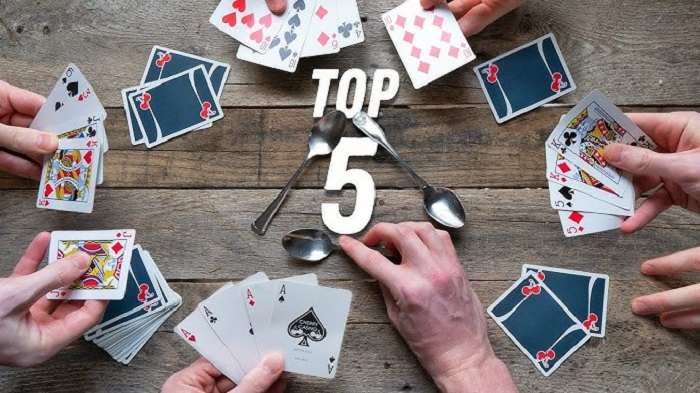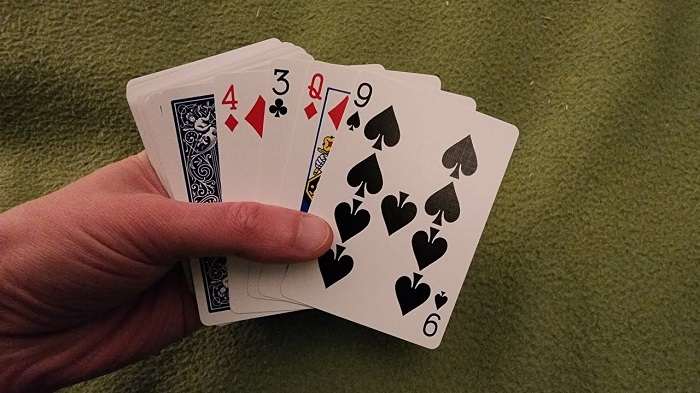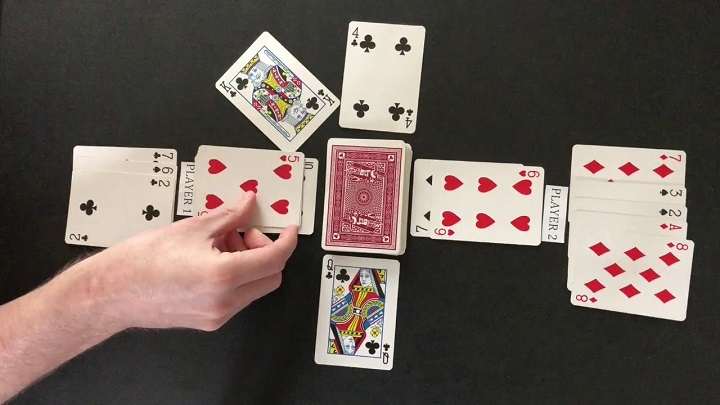Table of Contents
Toggle1. Introduction to Card Games

Card games have an illustrious history, dating back to ancient China, India, and Persia. Over time, they evolved and spread across the world, adapting to different cultures and preferences. Today, a standard deck of 52 cards serves as the foundation for a myriad of games, each with its own unique rules and strategies.
2. Basic Structure of a Deck
Before diving into the games, it’s essential to understand the structure of a standard deck:
2.1 The Deck Breakdown
- Suits: A standard deck has four suits: Hearts, Diamonds, Clubs, and Spades.
- Ranks: Each suit contains thirteen ranks: Ace, 2 through 10, Jack, Queen, and King.
- Jokers: Most decks also include two Joker cards, which are used in various games but are not part of the standard 52-card setup.
2.2 Card Values
- Number Cards: The cards from 2 to 10 are valued at their face value.
- Face Cards: Jacks, Queens, and Kings are typically worth 10 points each in games that assign point values.
- Aces: Aces can be worth either 1 or 11 points, depending on the game.
3. Classic Card Games
Classic card games are timeless and have been enjoyed by generations. Here are a few of the most popular:
3.1 Poker
Poker is perhaps the most famous card game, known for its blend of skill, strategy, and luck. The most common variant is Texas Hold’em.
- Objective: Build the best five-card hand or bluff other players into folding.
- Gameplay: Players are dealt two private cards and share five community cards. They use the best combination of these to form their hand.
- Hands Ranking: From highest to lowest, hands include Royal Flush, Straight Flush, Four of a Kind, Full House, Flush, Straight, Three of a Kind, Two Pair, One Pair, and High Card.
3.2 Bridge
Bridge is a complex and strategic game played with four players.
- Objective: Win as many tricks as possible by playing higher cards than opponents.
- Gameplay: Players form two partnerships. Each player bids to declare the number of tricks their team will win. The play involves strategic card-playing and communication between partners.
- Scoring: Points are awarded based on the number of tricks won and the contract fulfilled.
3.3 Solitaire
Solitaire is a classic single-player game that has various versions, with Klondike being the most well-known.
- Objective: Arrange all cards in a specific order, usually by suit and in ascending order.
- Gameplay: Cards are dealt into columns and rows. Players move cards according to specific rules to uncover and place all cards into foundation piles.
3.4 Rummy
Rummy is a group of matching-card games that involve forming sets or runs.
- Objective: Form sets (three or four of a kind) or runs (three or more consecutive cards of the same suit).
- Gameplay: Players draw and discard cards to form sets and runs. The game ends when a player successfully “melds” all their cards.
4. Strategy-Based Games
Strategy-based card games often require careful planning and tactical decision-making.
4.1 Hearts
Hearts is a trick-taking game where players aim to avoid certain cards.
- Objective: Avoid taking tricks that contain Hearts or the Queen of Spades.
- Gameplay: Players play one card each per round, and the player with the highest card in the lead suit wins the trick. Points are accumulated based on the cards taken.
4.2 Spades
Spades is another trick-taking game, typically played with four players in partnerships.
- Objective: Accurately bid the number of tricks you believe your team can take.
- Gameplay: Players bid on how many tricks their team will win, and the game proceeds with players playing cards to win tricks. Spades are always the trump suit.
4.3 Pinochle
Pinochle is a trick-taking game usually played with two to four players.
- Objective: Score points by forming combinations of cards and winning tricks.
- Gameplay: Players form melds (card combinations) and play tricks to score points. The game involves strategic bidding and play.
5. Social and Party Games
Card games are also great for social settings and parties. These games are often more casual and easier to learn.
5.1 Uno
Uno is a popular card game that uses a special deck but is similar to traditional card games.
- Objective: Be the first to get rid of all your cards by matching them to the top card on the discard pile.
- Gameplay: Players take turns playing cards that match the color or number of the top card. Special action cards add variety to the game.
5.2 Crazy Eights
Crazy Eights is a shedding game where players try to get rid of all their cards.
- Objective: Be the first to discard all your cards.
- Gameplay: Players match cards by rank or suit to the top card of the discard pile. Eights are wild and can be played to change the current suit.
5.3 Go Fish
Go Fish is a simple and fun game for younger players.
- Objective: Collect the most sets of four matching cards.
- Gameplay: Players ask each other for specific cards. If the asked player has the card, they must give it to the asking player. If not, the asking player draws from the deck.
6. Advanced Card Games
For those looking for a challenge, advanced card games offer deeper strategies and complex rules.
6.1 Euchre
Euchre is a trick-taking game that involves a trump suit.
- Objective: Win at least three out of five tricks in a hand.
- Gameplay: Players bid to choose the trump suit and then play tricks to win. The game often involves strategic play and teamwork.
6.2 Canasta
Canasta is a card game of the Rummy family that involves forming melds.
- Objective: Form melds of seven cards of the same rank.
- Gameplay: Players draw and discard cards to form melds and score points. The game is often played in partnerships.
6.3 Cribbage
Cribbage combines card play with a unique scoring board.
- Objective: Score points by forming combinations of cards and pegging on a board.
- Gameplay: Players create combinations of cards for points and move pegs on a board to keep track of scores.
7. Variations and Regional Games
Different cultures have developed unique variations of card games.
7.1 Piquet
Piquet is a two-player card game with a long history.
- Objective: Score points by forming card combinations and winning tricks.
- Gameplay: Players draw and discard cards to improve their hands and play tricks.
7.2 Durak
Durak is a popular Russian card game with unique mechanics.
- Objective: Avoid being the last player with cards remaining.
- Gameplay: Players use strategic card play to get rid of all their cards and defend against attacks.
7.3 Tarabish
Tarabish is a trick-taking game from the Middle East, often played in partnerships.
- Objective: Win tricks and score points based on the cards played.
- Gameplay: The game involves strategic play and bidding, with the objective of winning tricks and achieving high scores.
Tips for Playing Card Games

To enhance your card game experience, consider these tips:
8.1 Understand the Rules
Before starting a new game, make sure you fully understand the rules. Read the instructions or watch tutorial videos to get a grasp of the gameplay.
8.2 Practice Regularly
Practice helps improve your skills and understanding of the game. Regular play will also help you develop strategies and tactics.
8.3 Be Observant
Pay attention to your opponents’ moves and strategies. Observing their gameplay can provide valuable insights and help you make better decisions.
8.4 Stay Calm and Focused
Card games often involve strategy and bluffing. Stay calm and focused to make the best decisions and read your opponents effectively.
Related Post:
Unblocked Games: Snow Rider 3D – A Comprehensive Guide
Halo Games in Order: A Journey Through the Universe
Slope Unblocked Games 66: The Ultimate Gaming Experience
Card games with a standard deck offer a rich variety of options, from classic favorites to advanced strategies and social fun. Whether you’re playing Poker, Solitaire, or a unique regional game, the versatility of a deck of cards ensures that there’s always a game suited to your preference. So gather your friends or family, shuffle the deck, and enjoy the timeless enjoyment of card games.


